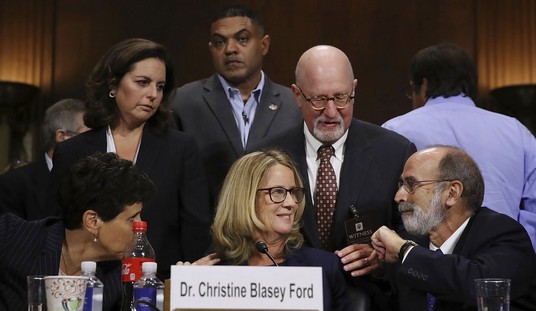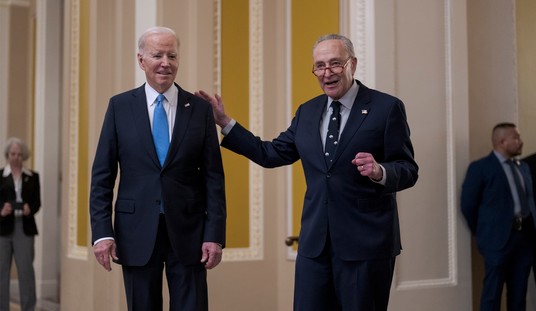If you feel like you may be getting whiplash from all of the spin on the IRS scandal, it just means you’re paying attention. Over the weekend, people had a tough time keeping the story straight — even within a single newspaper. On Friday, the Washington Post reported from their sources within the Cincinnati office of the IRS that the low-level employees just followed orders from their bosses, rather than going rogue as the administration suggests (via Sean Higgins, emphasis mine):
As could be expected, the folks in the determinations unit on Main Street have had trouble concentrating this week. Number crunchers, whose work is nonpolitical, don’t necessarily enjoy the spotlight, especially when the media and the public assume they’re engaged in partisan villainy.
“We’re not political,’’ said one determinations staffer in khakis as he left work late Tuesday afternoon. “We people on the local level are doing what we are supposed to do. . . . That’s why there are so many people here who are flustered. Everything comes from the top. We don’t have any authority to make those decisions without someone signing off on them. There has to be a directive.”
So it was the managers who put this extra scrutiny in place? Not so, said … the Washington Post yesterday. In an article headlined “How the IRS seeded the clouds in 2010 for a political deluge three years later,” the Post argues that the targeting was just an organic response to a stream of applications for tax-exempt status:
In early 2010, an Internal Revenue Service team in Cincinnati began noticing a stream of applications from groups with political-sounding names, setting in motion a dragnet aimed at separating legitimate tax-exempt groups from those working to get candidates elected.
The IRS officials decided to single out one type of political group for particular scrutiny. “These cases involve various local organizations in the Tea Party movement,” read one internal IRS e-mail sent at the time. …
According to the inspector general’s report, as IRS officials in Cincinnati tried to decide what to do about the groups — political advocacy organizations seeking what is known as 501 (c)(4) status — they sent out intrusive questionnaires seeking donor lists, copies of meeting minutes and reams of other documents. Applications sat around for months, sometimes years; some organizations ended up folding while awaiting answers that never came.
IRS officials in Cincinnati were ignorant of the law and did not recognize that they should not scrutinize groups solely based on terms such as “tea party,” “patriots” and other conservative-sounding descriptions in their names, the inspector general’s report said.
On Friday, the low-level IRS officials insisted that they wouldn’t have applied any special scrutiny without a directive from management. On Sunday, they’re back to being rogue agents making their own decisions. I wonder if Washington Post reporters actually read the Washington Post. They certainly seem to have trouble doing any research outside of their own archives, because had they checked on the actual data for applications in FY2010, they would have discovered that the number of applications had dropped, not increased.
Oh, if the Post only had a checker of fact to weigh in on this conundrum. Hey, wait a moment, it does! In fact, the paper’s Glenn Kessler gave Lois Lerner four Pinocchios today for making the same claim:
At first glance, the Inspector General’s report appears to show that the number of 501(c)(4) applications actually went down that year, from 1,751 in 2009 to 1,735.
But it turns out that these are federal fiscal-year figures, meaning “2010” is actually Oct. 1, 2009 to Sept. 30, 2010, so the “2010” year includes more than three months before the Supreme Court decision was announced.
Astonishingly, despite Lerner’s public claim, an IRS spokeswoman was not able to provide the actual calendar year numbers. By allocating one-quarter of the fiscal year numbers to the prior year, we can get a very rough sense of the increase on a calendar-year basis.(Figures are rounded to avoid false precision; 2012 is not possible to calculate)
2009: 1745
2010: 1865
2011: 2540
In other words, while there was an increase in 2010, it was relatively small. The real jump did not come until 2011, long after the targeting of conservative groups had been implemented. Also, it appears Lerner significantly understated the number of applications in 2010 (“1500”) in order to make her claim of “more than doubled.”
So much for the organic defense.
The Post’s reporters make another odd and unsupported claim:
Many liberal-leaning and nonpolitical groups were also caught up in the effort.
Really? Like whom, exactly? An analysis by USA Today last week showed the exact opposite — that groups with liberal- or progressive-sounding names sailed through the approval process without any additional scrutiny. Zachary Goldfarb and Kimberly Kindy just throw that sentence into the article above the jump, and follow it up with no data or even anecdotal evidence that it’s at all accurate or even arguable.
Next time the Post wants to offer a follow-up, maybe they’d like to have reporters do it, rather than stenographers for the IRS.
Update: Guy Benson reminds me that Steve Miller specifically refuted the notion that progressive groups got the same targeting during his testimony on Friday:
http://www.youtube.com/watch?feature=player_embedded&v=TPzwFTSXF-8
I guess these reporters missed the hearing, too.








Join the conversation as a VIP Member